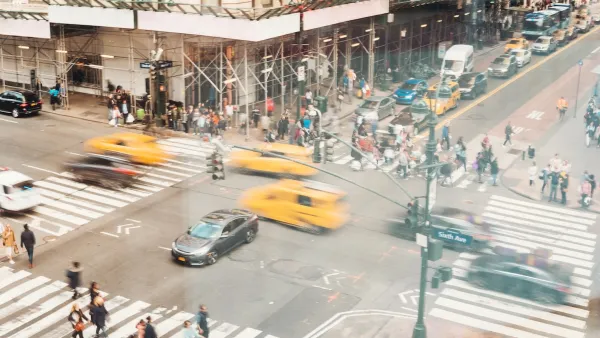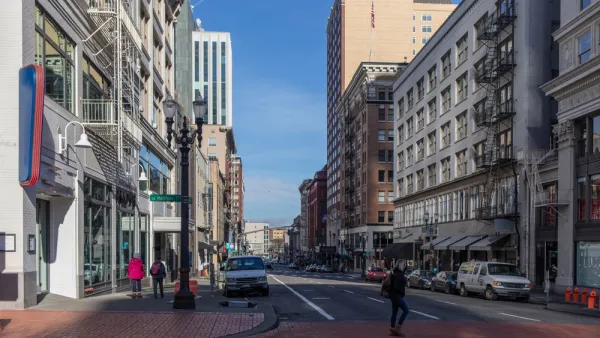After a decade of steady declines in traffic-related fatalities in New York City, amid a focused effort to improve traffic safety, Robert Kolker examines why such deaths spiked upward of 23 percent in the past year.
Thanks to the efforts of Mayor Bloomberg and transportation commissioner Janette Sadik-Khan to "redesign roadways, install bicycle lanes, and implement other new safety measures," New York's streets are now being shared equitably by cars, walkers, and cyclists "[t]o a greater degree than at any time since before World War II," says Kolker. In light of these efforts, which have made New York’s traffic-fatality rate far lower than many other big cities’, Kolker asks what is to blame for the recent spike in such deaths: is it a fluke or does it show the limits of traffic safety design and engineering?
"Sadik-Khan says the number may be a fluke. She notes that New York’s downward trend in deaths has never been consistent year-to-year. 'In fact, every other year since 2005 has seen a slight uptick in fatalities—2006, 2008, and 2010—compared to the record lows in the intervening years when the number nose-dived.'”
"Safety advocates, however, argue that the city is still overlooking critical problems. Although the new bike lanes protect riders in some ways, for instance, critics say that sharing ever-narrowing roadways has created new hazards...Cars still speed, drivers still drink, and jaywalkers still pay no attention, especially with smartphones to distract them."
“I wonder if we’ve reached a critical mass where so many people are looking down and so many people are listening to headphones and so many drivers are texting that the probability of an inattentive walker and an inattentive driver is much greater,” says Sam Schwartz, a.k.a. Gridlock Sam, the transportation consultant and traffic guru.
"Safety advocates say the DOT needs to continue to look for new engineering solutions that can help slow down speeding vehicles. But the biggest problem, they say, lies with law enforcement."
FULL STORY: Death by Car

Analysis: Cybertruck Fatality Rate Far Exceeds That of Ford Pinto
The Tesla Cybertruck was recalled seven times last year.

National Parks Layoffs Will Cause Communities to Lose Billions
Thousands of essential park workers were laid off this week, just before the busy spring break season.

Retro-silient?: America’s First “Eco-burb,” The Woodlands Turns 50
A master-planned community north of Houston offers lessons on green infrastructure and resilient design, but falls short of its founder’s lofty affordability and walkability goals.

Test News Post 1
This is a summary

Analysis: Cybertruck Fatality Rate Far Exceeds That of Ford Pinto
The Tesla Cybertruck was recalled seven times last year.

Test News Headline 46
Test for the image on the front page.
Urban Design for Planners 1: Software Tools
This six-course series explores essential urban design concepts using open source software and equips planners with the tools they need to participate fully in the urban design process.
Planning for Universal Design
Learn the tools for implementing Universal Design in planning regulations.
EMC Planning Group, Inc.
Planetizen
Planetizen
Mpact (formerly Rail~Volution)
Great Falls Development Authority, Inc.
HUDs Office of Policy Development and Research
NYU Wagner Graduate School of Public Service



























